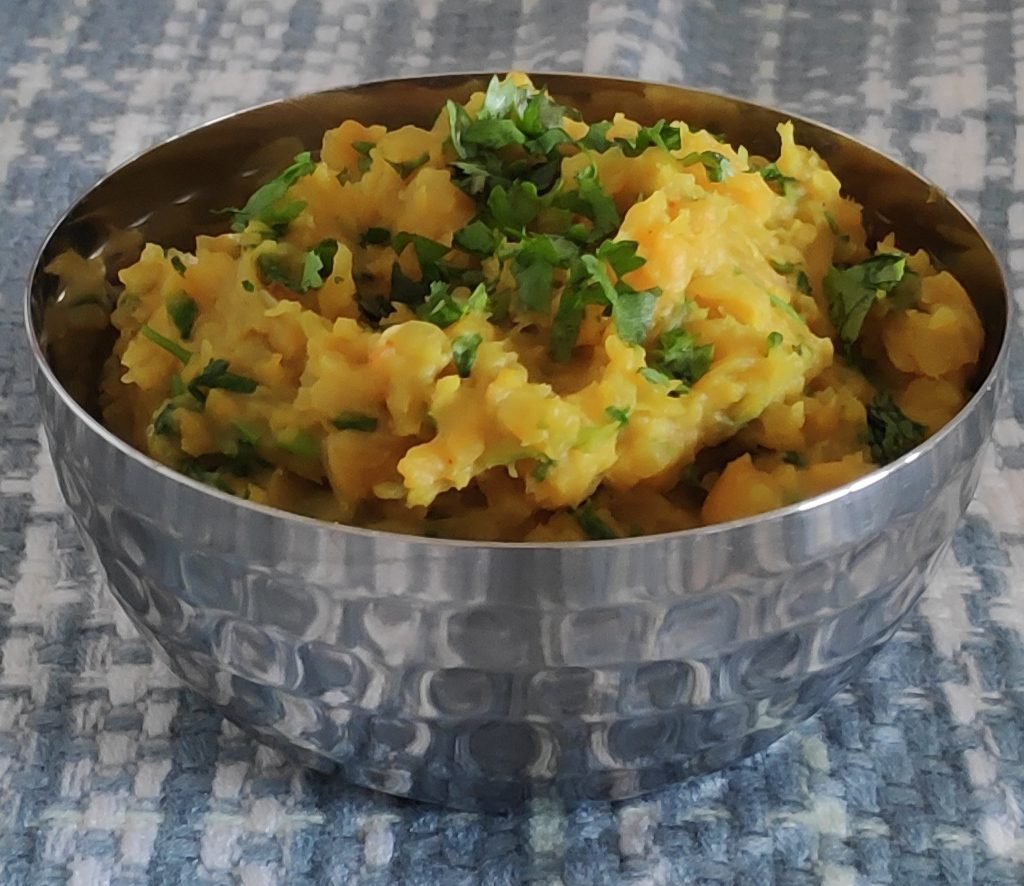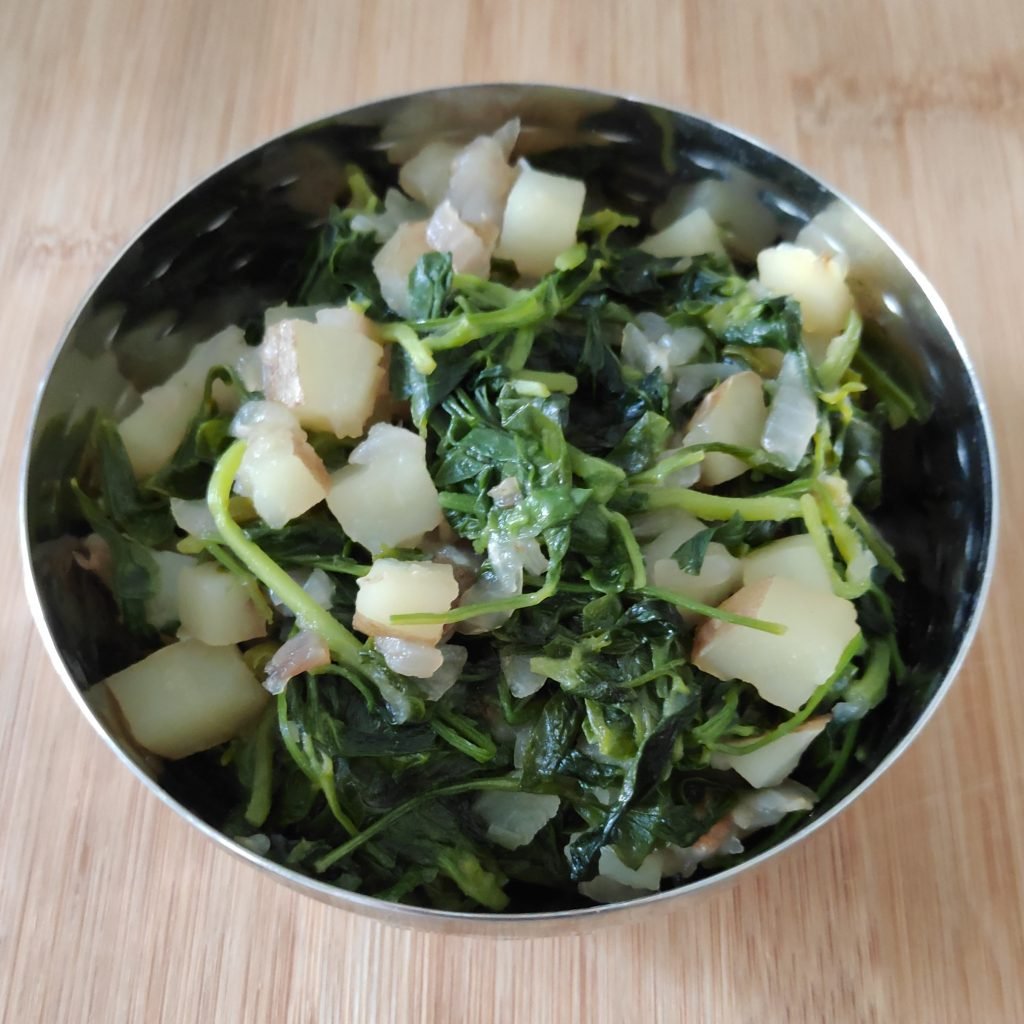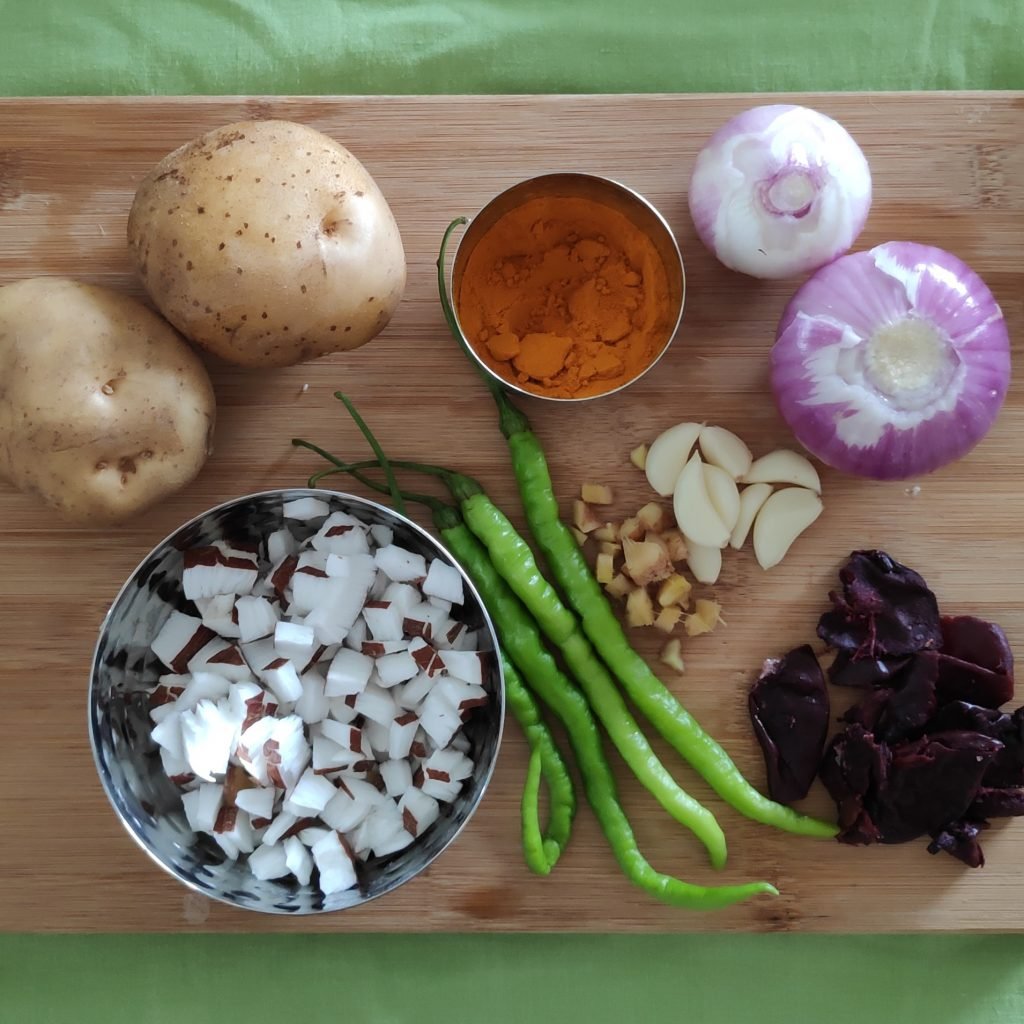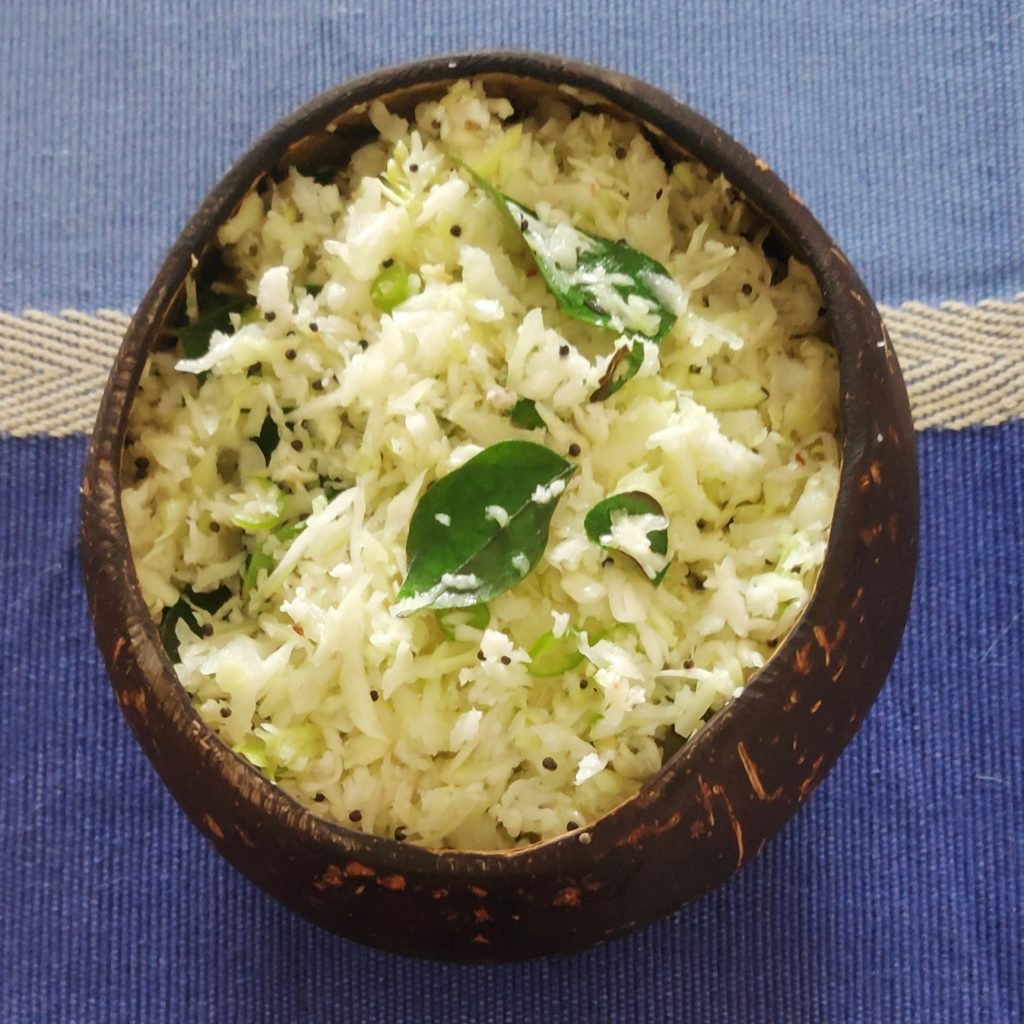
Daali Kanda (Moong dal with onion)
Moong bean is a legume native to India and is a low-carb, high-protein bean. In fact, moong is one of the best plant-based sources of protein. They’re rich in essential amino acids or those that your body is unable to produce on its own. It is rich in fiber, especially if it is used with the green skin on it. It is also rich in potassium and manganese, some B vitamins, and along with the fiber enhances the body’s capacity to fight and rectify lifestyle diseases like heart problems, diabetes, and hypertension. Like other legumes, it also contains resistant starch which is great for the gut microbiome. It’s much easier to digest than other pulses and legumes. Sprouted moong beans are better nutritionally and contain more free amino acids and antioxidants. In fact, sprouted moong may contain as much as six times more antioxidants than regular mung beans. So, all in all, it’s a great addition to your meals.








